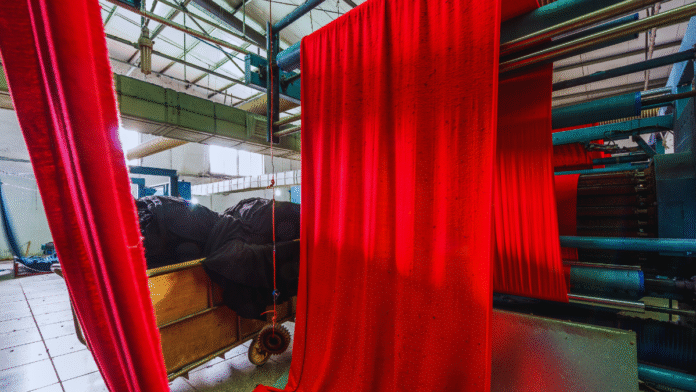At Shingora Textiles, a cloth manufacturing unit situated in an industrial cluster on the outskirts of Ludhiana, a group of workers are at work. They are handling a large weaving machine that churns out “performance fabrics.” These are materials that go into making clothing items that are resistant to gases, water, and chemicals. There are rows of such machines spread over the massive 200,000 square feet factory area.
One of the supervisors tells this correspondent, the workers are unaware of the problems that their employer is facing at the moment.
ALSO READKey infrastructure sector growth slows down to 2% in July
Ever since the US has announced a doubling of the additional tariff on India to 50% from 25%, Shingora’s US customers have put their shipments on hold, and asked the company to wait until there’s clarity on the tariff rate. Going by Washington’s current plan, the 50% tariff which includes a punitive levy of 25% for importing oil from Russia will take effect from August 27.
The Indian industry is pinning hopes on the attempts being made to resolve the Russia-Ukraine conflict. On its part, the government of India has made it clear that so long as Russian oil helps it cut the country’s huge energy import bill, imports from Russia can’t stop.
Tariff hike stalls shipments, squeezes cash flows
Nearly 30% of the textile units in Ludhiana have exposure to the US market. Like Shingora, many other companies in this town have been asked to put their shipments on hold.
Amit Jain, managing director of Shingora Textiles told FE even though none of his US customers have cancelled the orders, hoping that some resolution might come before August 27, a pause on shipments has affected his cash flows badly. “My investments have already gone into labour and raw materials. The customer is not going to pay me till he or she gets the goods, so I have become a virtual warehouse,” he said.
Shingora has a three-way exposure to the US, including direct selling to the US offline retailers, indirect exports to the US through tie-ups with global retailers based in Japan, Spain, etc who also have presence in the US. It’s also supplying fashion fabrics to the Indian companies who are exporting to the US customers. “About 35% of the revenues are coming from the US.
» Read More


